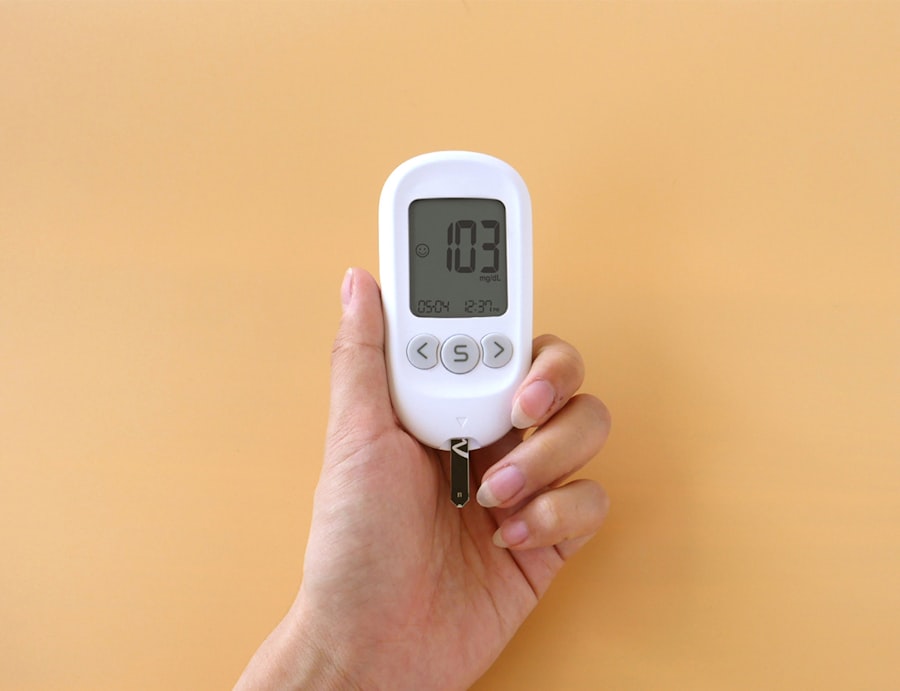Prediabetes is a condition that often goes unnoticed, lurking in the shadows of our health. It serves as a warning sign that our bodies are beginning to struggle with insulin sensitivity, a precursor to type 2 diabetes. When we think about prediabetes, we must recognize that it is not a definitive diagnosis of diabetes but rather a critical juncture where we can take action to prevent the progression of this serious disease.
Our blood sugar levels are higher than normal but not yet high enough to be classified as diabetes. This state of elevated blood sugar can be alarming, yet it also presents us with an opportunity to make meaningful changes in our lives. As we delve deeper into the concept of prediabetes, we realize that it affects millions of people worldwide.
The Centers for Disease Control and Prevention (CDC) estimates that approximately 88 million adults in the United States alone have prediabetes, and many are unaware of their condition. This lack of awareness can be attributed to the subtlety of its symptoms and the gradual nature of its onset. Understanding prediabetes is crucial for us, as it empowers us to take proactive steps toward better health and well-being.
By recognizing the signs and symptoms early on, we can intervene before the condition escalates into something more severe.
Signs and Symptoms of Prediabetes
Identifying the signs and symptoms of prediabetes can be challenging, as they often manifest subtly and may be mistaken for other health issues. One of the most common indicators is an increase in thirst and frequent urination. We might find ourselves reaching for water more often than usual or making more trips to the bathroom, which can be easily overlooked in our busy lives.
Additionally, fatigue can become a constant companion, leaving us feeling drained even after a full night’s sleep. These symptoms may seem innocuous at first, but they can signal that our bodies are struggling to manage blood sugar levels effectively. Another telltale sign of prediabetes is the presence of dark patches of skin, particularly in areas such as the neck, armpits, or groin.
This condition, known as acanthosis nigricans, can serve as a visual cue that our insulin levels are elevated. We may also notice unexplained weight gain or difficulty losing weight despite our best efforts. These physical manifestations can be frustrating and disheartening, but they also provide us with valuable information about our health status.
By paying attention to these signs, we can take the necessary steps to address our prediabetes before it progresses further.
Health Risks Associated with Prediabetes

The health risks associated with prediabetes are significant and should not be taken lightly. If left unaddressed, prediabetes can lead to type 2 diabetes, which carries its own set of complications, including heart disease, kidney damage, and nerve damage. As we consider these potential outcomes, it becomes clear that prediabetes is not merely a benign condition; it is a serious health concern that warrants our attention and action.
The longer we remain in this state without intervention, the greater our risk becomes for developing more severe health issues. Moreover, individuals with prediabetes are at an increased risk for cardiovascular diseases. Research has shown that elevated blood sugar levels can contribute to inflammation and damage to blood vessels, leading to conditions such as hypertension and high cholesterol.
These factors can significantly increase our risk of heart attacks and strokes. Understanding these risks is essential for us as we navigate our health journeys. By acknowledging the potential consequences of prediabetes, we can motivate ourselves to make lifestyle changes that will not only reverse our condition but also enhance our overall well-being.
How to Reverse Prediabetes through Lifestyle Changes
Reversing prediabetes is entirely possible through intentional lifestyle changes. The first step we can take is to assess our current habits and identify areas for improvement. This may involve evaluating our diet, physical activity levels, and stress management techniques.
By making small yet impactful changes in these areas, we can significantly lower our blood sugar levels and improve our overall health. For instance, incorporating more whole foods into our diet—such as fruits, vegetables, whole grains, and lean proteins—can provide our bodies with the nutrients they need while stabilizing blood sugar levels. In addition to dietary changes, increasing our physical activity is crucial in reversing prediabetes.
Engaging in regular exercise helps improve insulin sensitivity and promotes weight loss, both of which are essential for managing blood sugar levels. We don’t need to embark on an intense workout regimen; even moderate activities like walking, swimming, or cycling can yield significant benefits. By setting achievable fitness goals and gradually increasing our activity levels, we can create a sustainable routine that supports our journey toward better health.
The Role of Diet and Exercise in Managing Prediabetes
Diet and exercise play pivotal roles in managing prediabetes effectively. When it comes to diet, we should focus on reducing our intake of refined carbohydrates and sugars, which can cause rapid spikes in blood sugar levels. Instead, we can opt for complex carbohydrates that are digested more slowly, such as whole grains and legumes.
Additionally, incorporating healthy fats from sources like avocados, nuts, and olive oil can help us feel satiated while providing essential nutrients. Exercise complements dietary changes by enhancing our body’s ability to utilize insulin effectively. Regular physical activity not only helps us maintain a healthy weight but also improves cardiovascular health and boosts our mood.
We might consider finding activities that we genuinely enjoy so that staying active becomes a rewarding part of our daily routine rather than a chore. Whether it’s joining a local sports team or taking up yoga, discovering what works for us can make all the difference in maintaining consistency.
Monitoring Blood Sugar Levels and Seeking Medical Advice

Monitoring our blood sugar levels is an essential aspect of managing prediabetes effectively. Regular check-ups with healthcare professionals allow us to track our progress and make informed decisions about our health. We should not hesitate to seek medical advice if we notice any concerning symptoms or if we have questions about our condition.
Our healthcare providers can offer valuable insights into managing prediabetes and may recommend specific tests to assess our blood sugar levels over time. In addition to professional guidance, we can also take charge of our health by monitoring our blood sugar levels at home if advised by a healthcare provider. This practice allows us to gain a better understanding of how different foods and activities affect our blood sugar levels.
By keeping a journal of our readings alongside notes on what we eat and how we exercise, we can identify patterns that will help us make more informed choices moving forward.
Medications and Treatment Options for Prediabetes
While lifestyle changes are often the first line of defense against prediabetes, there may be instances where medications are necessary to help manage blood sugar levels effectively. Metformin is one such medication commonly prescribed for individuals with prediabetes or those at high risk for developing type 2 diabetes. It works by improving insulin sensitivity and reducing glucose production in the liver.
If lifestyle modifications alone are insufficient in controlling blood sugar levels, discussing medication options with a healthcare provider may be beneficial. In addition to metformin, other treatment options may include weight loss medications or insulin therapy in certain cases. However, it’s important for us to remember that medications should complement—not replace—lifestyle changes.
By focusing on improving our diet and increasing physical activity alongside any prescribed treatments, we can create a comprehensive approach to managing prediabetes effectively.
Preventing Prediabetes and Maintaining a Healthy Lifestyle
Preventing prediabetes is within our reach if we commit to maintaining a healthy lifestyle. This involves adopting habits that promote overall well-being rather than solely focusing on weight loss or blood sugar control. We should prioritize regular physical activity, balanced nutrition, adequate sleep, and stress management techniques as integral components of our daily lives.
By fostering a holistic approach to health, we can reduce our risk of developing prediabetes while enhancing our quality of life. Moreover, staying informed about our health is crucial in preventing prediabetes from taking hold. Regular check-ups with healthcare professionals allow us to monitor key indicators such as blood pressure, cholesterol levels, and blood sugar levels over time.
By being proactive about our health and making informed choices based on reliable information, we empower ourselves to lead healthier lives free from the burden of chronic conditions like prediabetes. In conclusion, understanding prediabetes is essential for us as we navigate our health journeys. By recognizing the signs and symptoms early on and taking proactive steps through lifestyle changes, we can reverse this condition and prevent its progression into type 2 diabetes.
Through mindful dietary choices, regular exercise, monitoring blood sugar levels, seeking medical advice when necessary, and committing to a healthy lifestyle overall, we can take control of our health and pave the way for a brighter future free from the complications associated with prediabetes.
